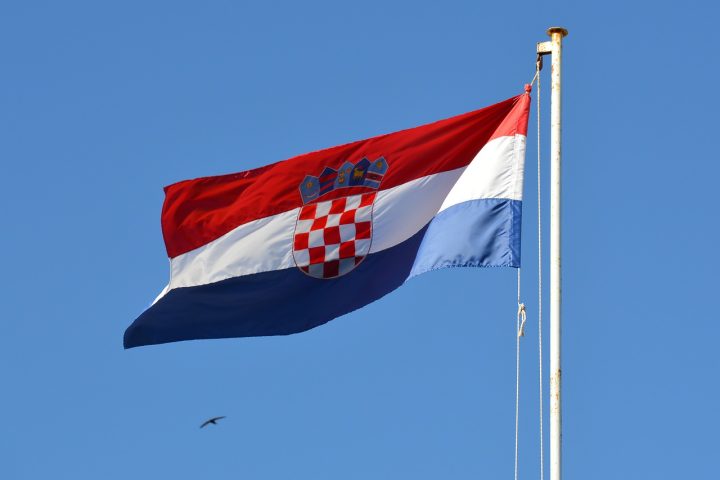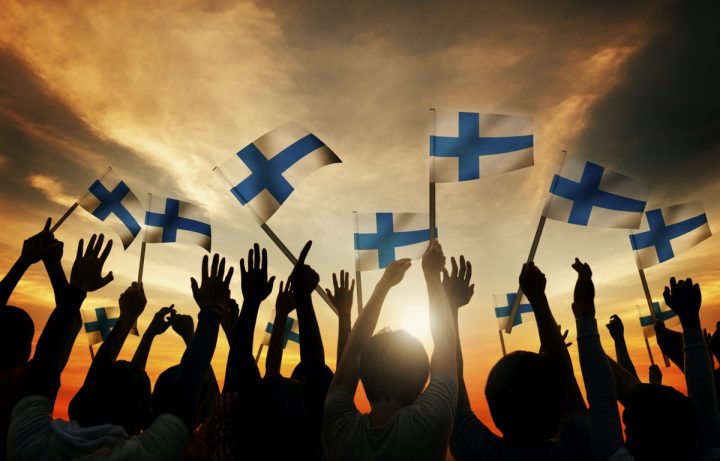European Ecommerce Overview: Latvia
Written by
Kinga EdwardsPublished on
Gain insights into Latvia’s e-commerce . Our comprehensive overview covers market changes, consumer behavior, payment preferences, and more!

Latvia is one of the Baltic countries. It borders Estonia, Russia, Lithuania, and Belarus. It has access to the Baltic Sea from the West. Latvia is one of the smallest countries in Europe – its area is only 64 589 km².
Latvia’s capital and largest city is Riga, known for its rich cultural heritage and architecture. The country has a diverse landscape, including forests, lakes, and rivers, and is known for its historical sites, natural beauty, and vibrant traditions.
As of 2024, Latvia’s GDP per capita is projected to reach approximately $34,623. Its economy is doing well – industry is the biggest part of Latvian GDP. But what about online actions? How are e-commerce and consumers’ attitudes towards it? We will tell you more about it.
Let’s start with the Latvian e-commerce overview.
E-commerce in Latvia – overview
The Latvian e-commerce market is quite small yet offers many opportunities for online retailers. This Baltic country has a projected e-commerce revenue of €372.2 million. The sector is benefiting from a steady compound annual growth rate (CAGR) of 5.4% since 2019. That’s no small feat for a market of Latvia’s size, and it highlights just how crucial online shopping has become for Latvian consumers. The number of employees also increased, by as much as 6.9% compared to 2019.
Compared to other Baltic countries like Estonia and Lithuania, e-commerce in Latvia is developing more slowly. The highest growth in e-commerce revenue is projected for Estonia.
In 2023, the most common products that customers bought online were Fresh food and beverages, Groceries, DVD/CD/Video games, Beauty and healthcare, Medicine, Fashion, and Toys. Other sectors like Leisure, Sport, Books, or Car equipment also see notable contributions. This data shows that consumers are expanding their shopping habits across a variety of categories.
Below is the comprehensive overview.
On the other hand, in 2024, Latvian consumers are increasingly turning to online shopping, with clothing and shoes leading the charge. According to the Central Statistical Bureau, 58% of people aged 16–74 made online purchases in the past three months, with a significant increase in clothing, shoes, and accessories purchases. Additionally, food delivery from restaurants has surged, now ordered by 25.8% of online shoppers, while cosmetics and beauty brands also remain popular.
The chart below shows data from 2024 (blue) and 2020 (orange).
As of November 2024, Latvians’ favorite e-commerce sites are rimi.lv, Azeron Keypad, and cleverfoxplanner.com. Then came Molport and LMT. The two giant retailers like IKEA and Zalando also made the list – on the 12 and 34 positions, respectively.
Also, the rise of e-commerce platforms like 220.lv, which saw 2.5 million visits in July 2023, shows the increasing shift in how people buy. Retailers who embrace this change can easily reach a broader audience. Not only can they sell locally, but they can also capture international interest with minimal overhead compared to traditional brick-and-mortar stores.
The impact of a robust e-commerce presence is clear. Retailers that are active online can expand their reach and visibility and offer a unique shopping experience for tech-savvy consumers. They can also build stronger customer relationships through personalized recommendations, loyalty programs, and targeted marketing.
However, the country faces some challenges, like delivery delays. Also, non-EU businesses should verify specific requirements to ensure compliance with Latvia’s VAT laws. Despite these hurdles, Latvia’s e-commerce sector is poised for steady development in the coming years.
Latvian consumers behavior
As of November 21, 2024, Latvia’s population was 1,864,658. And in January 2024, this country had 1.69 million internet users and an internet penetration rate of 92.9%.
Women shop online more frequently than men, particularly for clothing and beauty products. Males, on the other hand, are more likely to purchase electronics and vehicles online. The younger population is particularly inclined to order food, with 33.7% of individuals aged 16–24 making such purchases.
The chart below shows the statistics for males (blue) and females (red) for 2024.
Overall, the number of Latvians making online purchases has steadily increased over the years, with 65% of the population now engaging in e-commerce – up from 33.5% in 2014. Despite these gains, Latvia still lags behind the EU average of 69.9%.
Latvian consumers are exhibiting a heightened sensitivity to prices, influenced by economic factors such as inflation and wage growth. The Consumer Price Index (CPI) in Latvia increased by 2.0% year-on-year in October 2024, marking a 0.6 percentage point rise from the previous month. Also, the consumer confidence indicator in Latvia stood at -10.3% in October 2024, which reflects a cautious outlook among consumers regarding their financial situation and the overall economy.
All right, but why does e-commerce matter in Latvia? Why do people buy online in that country?
The answer is simple: consumers like this level of convenience that e-commerce offers.
Online shopping eliminates the need to travel, wait in long queues, or adhere to store hours, which is a significant advantage for busy consumers. With just a few clicks, they can compare prices, read reviews, and make purchases from the comfort of their own homes.
Additionally, the variety available online is unmatched. Latvian consumers can access products that might not be available locally, or find niche items that cater to specific needs. The ability to shop from a wider selection of both local and international brands allows for a more personalized shopping experience.
Interestingly, Latvians like free delivery and are able to make larger purchases just to get gratis shipping. To be fair, more than one in two respondents in Latvia admitted that they used to buy additional products to get free shipping when shopping online.
Moreover, from 2020 to 2022, the average online shopping penetration has increased across Latvia, as more people shop online. For example, in regions such as Pierīga, the average rate of online shopping grew year after year.
Payment methods in Latvia
In Latvia, the e-payment landscape is dominated by a mix of traditional and modern payment methods, with bank cards, bank transfers, digital wallets, and cash-on-delivery being the most common options for consumers.
According to Ayden, 45% of people prefer paying with bank cards, particularly Visa and Mastercard, which are the most popular e-commerce payment methods in the country. In fact, over six in ten e-shoppers between May and July 2023 chose these cards for their online purchases. Bank transfers were also widely used.
However, Latvia is shifting towards cashless payments, with the ratio of non-cash to cash payments reaching 77% to 23% in February 2024. Over the past two years, this ratio has steadily increased.
Technological advancements have also influenced payment habits.
Contactless payments have become more common, with 67% of Latvians using contactless cards daily in August 2024. Smartphone payments are also on the rise, with 22% of the population using them daily in the same month of 2024.
Additionally, instant payments have gained traction, with 35% of the population using this option daily, and 26% of Latvians making payments using only the payee’s mobile number.
Despite the increasing prevalence of digital payments, cash still plays a significant role, particularly for in-person transactions.
Latvian social media
In early 2024, 1.46 million people in Latvia were active social media users, making up 80.2% of the total population. Among them, 87.9% of adults aged 18 and above were engaged with social platforms. The gender split showed 54% of social media users were female, and 46% were male.
Facebook, YouTube, and Instagram remain dominant platforms, with Facebook reaching 45.3% of the total population. However, Facebook’s ad reach in Latvia saw a decline of 2.6% from 2023 to 2024.
More insights about social media in Latvia:
- YouTube also had a strong presence, with 1.46 million users in Latvia, reaching 80.2% of the population.
- Instagram’s audience grew by 0.9% over the year.
- TikTok had 741.5 thousand adult users in Latvia in 2024 and reached 43.8% of the local internet user base.
- LinkedIn’s ad reach grew by 13.6% from 2023 to 2024, reaching 27.5% of the total population.
These figures highlight quite a strong presence of social media platforms in Latvia, though certain platforms are experiencing slight declines in user reach.
Logistics in Latvia
The Lithuanian roads and highways network is 57,972 km. This logistics sector continues to be a pivotal component of the country’s economy, benefiting from strategic investments and infrastructure developments. The country’s location at the heart of the Baltic Sea region positions it as a central hub for transportation and storage.
A significant advancement is the construction of the Baltic Cargo Hub at Riga International Airport, a collaboration between the national airline airBaltic and UPB Nams. This state-of-the-art facility is set to become the largest dedicated air cargo handling center in the Baltics, enhancing Latvia’s role in regional logistics. Rail Baltica, a major European infrastructure project, is also underway. It aims to establish a modern and sustainable rail link connecting the Baltic States with the European rail network. This project is expected to significantly improve freight logistics by providing faster and more efficient transportation options.
Despite these developments, the logistics sector faces challenges. In the first half of 2024, Latvian ports experienced an 11.4% decrease in cargo turnover compared to the same period in 2023. Additionally, the volume of freight transported by rail, sea, and air declined, while road freight saw an increase.
To recap quickly
Latvia is a new consumer market for e-commerce. So there is great potential, especially for e-commerce providers, who know the East European market’s character.
For retailers in Latvia, e-commerce isn’t just a trend. It’s an essential channel to stay competitive. By adopting online sales, businesses can leverage a growing market, position themselves for future success, and tap into the increasing demand for convenient shopping options.
Thanks to this article, we hope you have gathered some valuable information about the Latvian e-commerce market.
If you are interested in the East European market, here you can read about Lithuanian e-commerce.


